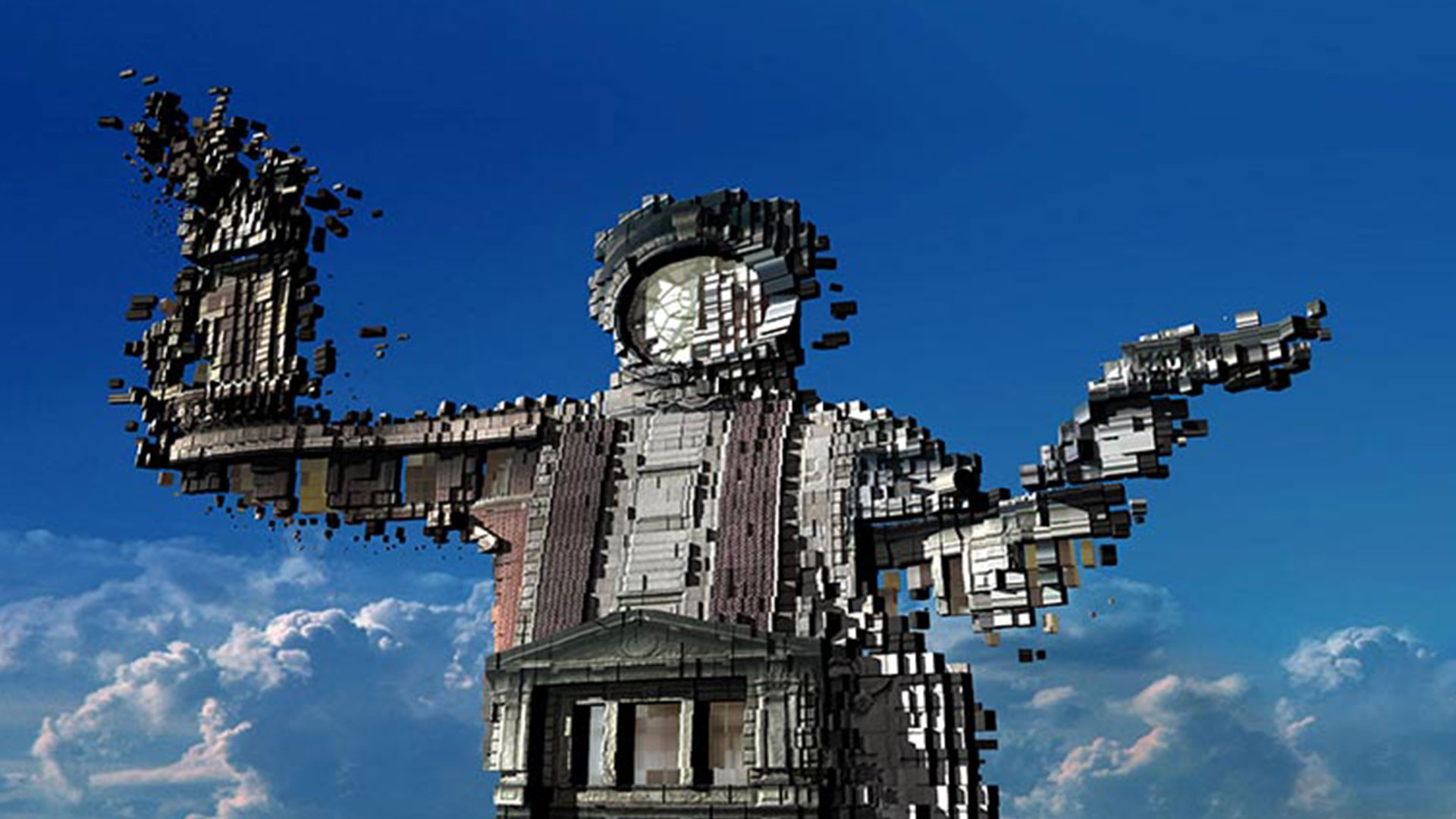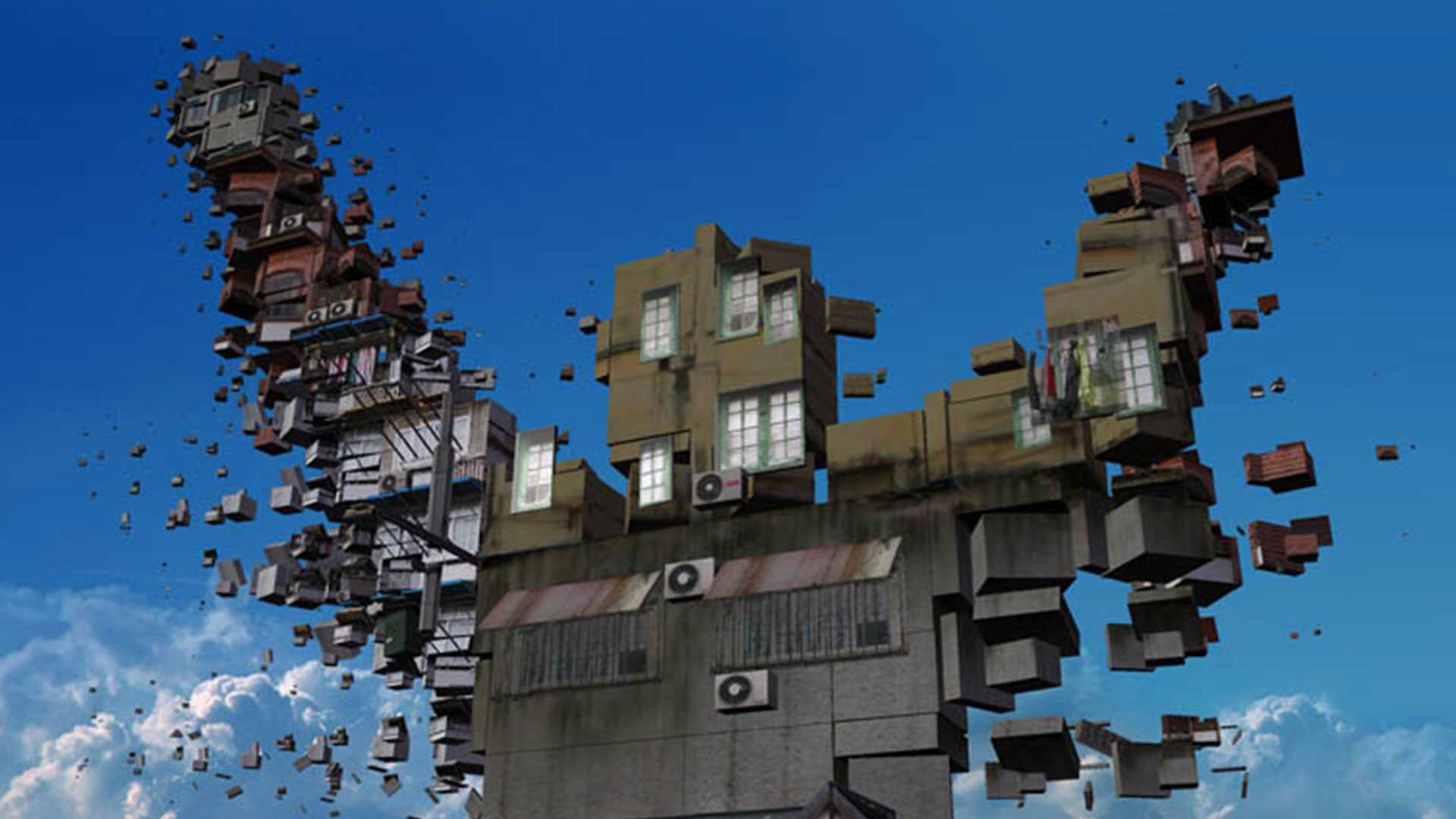
阿根廷我可以跟你跳一支舞嗎?
Shall We Dance, Argentina?
「互動性」是新媒體藝術鮮明的特質,觀眾的身體參與成為建構作品的一部份。黃心健很早便開始思索新媒體藝術具有的互動性。2008年,黃心健於上海雙年展展出《上海,我可以跟你跳一支舞嗎?》,並於2013年404電子藝術節中,將當地建物融入作品,以《阿根廷,我可以跟你跳一支舞嗎?》展出。
本作雛型可追溯至2005年的作品《過客》,黃心健在此時開始嘗試結合電腦、影像等多媒體,製作與觀眾互動的影像裝置作品。在這件作品中,建築物分解為方格,對應觀眾造型,隨著觀眾的姿態變化不停地建構組合。而在《阿根廷,我可以跟你跳一支舞嗎? 》中,觀眾的身體將在影像中化身為建築物,建築物會隨著觀眾的動作呈現出相同的姿態,而觀眾一旦退出螢幕,建築物也隨之坍塌,隱喻人與城市的關係。人類一但撤離了建築,城市也隨之消亡。城市是由無數人類所樹立的建築所構成,高聳的建築收容著人們,與巨大的現代結構相較,人看似渺小、無力、短暫,但都市的風貌,卻是由人們所建構。影像中的建築之舞,便是人們的集體之舞。
“Interactivity” is a standout trait of new media art that allows the bodies of viewers to become part of the construct of the work. Huang started contemplating the interactivity of new media art early on and presented Shall We Dance, Shanghai? at the 2008 Shanghai Biennial. At the 404 International Festival of Art & Technology in 2013, Huang integrated local architecture into his work, which was presented as Shall We Dance, Argentina?.
The prototype of this work can be traced back to the artist’s 2005 work Passage, which was when Huang started experimenting with combining multimedia such as the computer and images to create image installations that allow interaction with viewers. In this work, buildings are pixelated and continue to reconstruct according to the appearance and posture of the viewer. In Shall We Dance, Argentina?, the viewers’ bodies are transformed into buildings that mirror the poses of the viewers. Once viewers leave the screen, the building collapses, a metaphor for the relationship between humans and the city. Once people leave the buildings, the city ceases to exist. The city is formed by architecture built by countless humans. The towering buildings provide shelter for the people of the city, but compared with its colossal modern structures, humans seem small, feeble, and transient. However, the cityscape is the work of humans. The dance of the buildings in the images is a group dance of the people.

